Mandala Monday – The Mandala – Origin and use by Yoga Mandala
The Mandala – Origin and use
The way in which Mandalas are made is already ancient. In the prehistory, the first simple representations were made, which can be compared with the mandala. These include, for example, rock drawings, which according to estimates by archaeologists could be 25,000 to 30,000 years old. These represented circles with a center, which are interpreted by the scientists as sun cycles.
Also in the Celts culture, the Indians, the Aborigines Australia and the South-American Inkas round sample forms with a center were found. In the emergence of different cultures and religions in Asia, the representations of the mandalas were artistically refined and provided with a great variety of colors. The impressive cult designs were filled with religious content and used in various religious rites in the East Asian countries and in India.
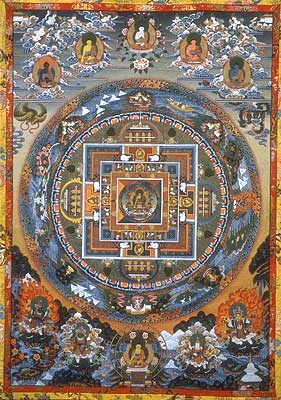
Tibetan Mandala
The versatile use of mandalas
For religions such as Buddhism and Hinduism, which are oriented towards the production of inner and outer harmony as the basis of knowledge and salvation, the mandalas became important objects for meditation. The forms are also found in Christian sacred temples. Medieval church windows and church paintings are often provided with similar representations.
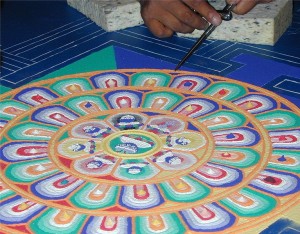
Tibetan monks making a temporary “Sand-Mandala”
in the City-Hall of Kitzbuehel in Austria.
Symbolic representations as a triangle with rays, the Holy Spirit as an illuminated circle, and similar symbols also use the representation principles of the mandala. The centered images greatly enhance the concentration in a meditation.
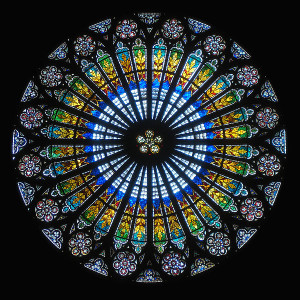
Interior of the rose at Strasbourg Cathedral.
Mandalas in Psychology?
C. G. Jung, a famous psychologist, used the principle of mandalas for examinations and treatments. He noted that a mandala can show the sense of purpose and direction. The Mandalas could convey a sense of structure, security, hope and wholeness in an intense concentration on the picture. In patients, he even found that in certain situations they spontaneously painted mandala forms when asked to paint without prescriptions.
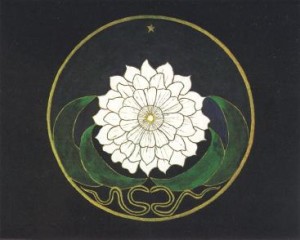
Mandala made by a Jung’s unknown patient before 1929
To date, there are numerous psychologists who use the mandala in their practice. This is based on the realization that the symbolism of a mandala always directly addresses the subconscious. The importance of mandalas, especially the circular shapes and shapes of squares, as an important element in meditation. In deepening into the pictorial representation, in which everything leads to the center, it is particularly well to sink into deep meditation. Especially in Tibet and India, the Mandalas served as meditation symbols and ritual actions.
Mandalas as a help in meditating
In practice, people can use different mandalas in meditation. Regardless of the complicated magical and ritual meanings that the individual mandalas have in different directions of Buddhism and Hinduism, their form is an excellent support. It is helpful to deal with the most important forms and colors at least.
This can accompany the attainment of a deep meditative state of content and lead to the desired emotions. As already mentioned in connection with mandalas in psychology, the subconscious is particularly addressed by each mandala. The view of the mandala, the deepening of its forms and colors, ensures a better concentration. Especially, the view should be directed towards the center.
Nothing around the mandala should distract from meditation. Depending on the condition of the person concerned in the meditation, the mandala can help to feel more peace, harmony, and serenity or to gain new strength, and to release one’s energies for vitality and creativity. However, a mandala never has a detachment from the person. It is always only a means, an important help with intensive meditation and the sinking into one’s own, deeper ego. The actual meditation, the concentration necessary for it always must the man himself. This can not be replaced by the effect of a mandala.
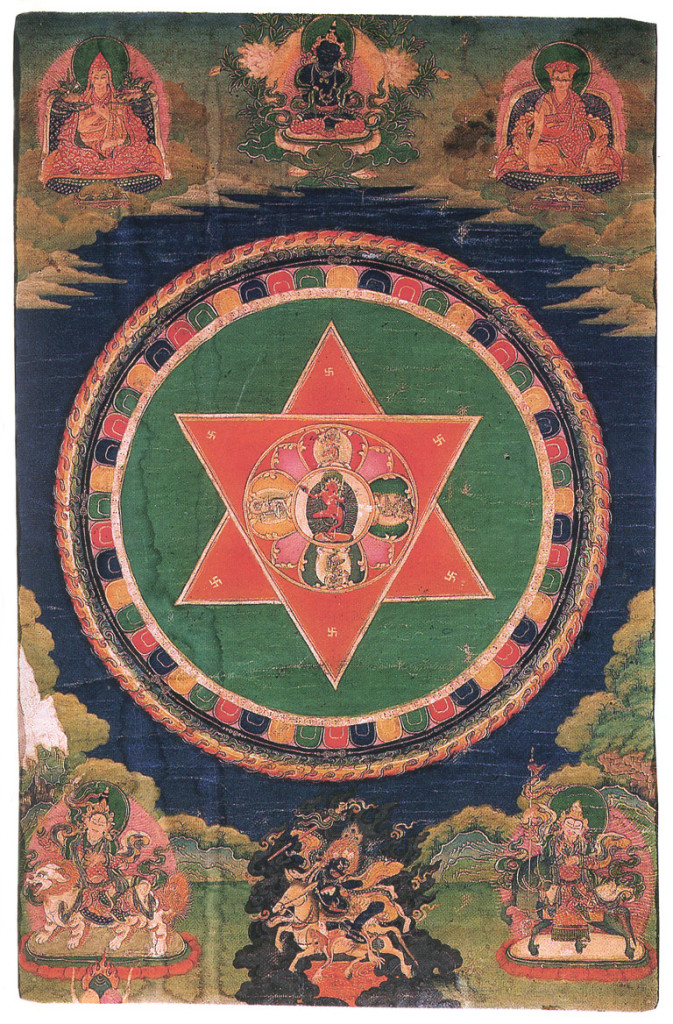 Vajravarahi Mandala
Vajravarahi Mandala
Mandalas, especially in Hinduism and Buddhism, have a ritual meaning as an element of meditation. However, the application goes far beyond the actual roots, so that the psychology and the meditation of the geometric mandala forms positively serve itself. And no, Mandalas do not have to be round. Most of them are actually.
For other offerings of The Yoga Mandala see:
——————————————————————————————————–
I look forward to your thoughts and comments!
